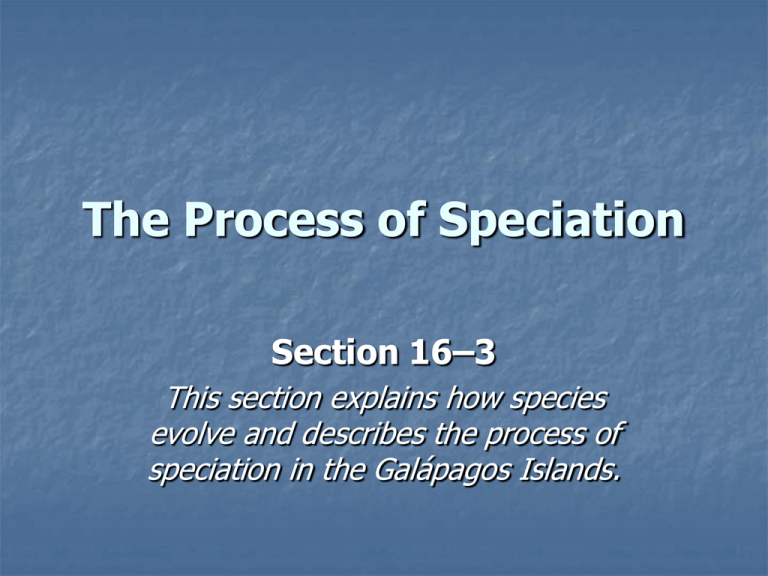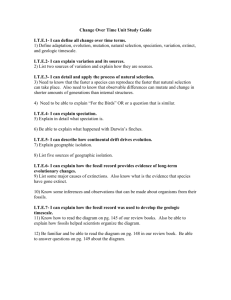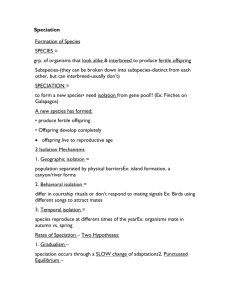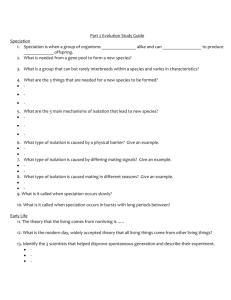Section 16–3 The Process of Speciation
advertisement

The Process of Speciation Section 16–3 This section explains how species evolve and describes the process of speciation in the Galápagos Islands. Introduction What is speciation? It is the formation of new species. Isolating Mechanisms The Process of Speciation Is the following sentence true or false? Individuals in different species can have the same gene pool. False The Process of Speciation What does it mean for two species to be reproductively isolated from each other? Members of the two species cannot interbreed and produce fertile offspring. The Process of Speciation What must happen in order for new species to evolve? Populations must be reproductively isolated from each other. The Process of Speciation List three ways that reproductive isolation occurs. Behavioral isolation Temporal isolation Geographic isolation The Process of Speciation When does behavioral isolation occur? It occurs when populations are capable of interbreeding but have differences in courtship rituals or other types of behavior. The Process of Speciation Is the following sentence true or false? Eastern and Western meadowlarks are an example of behavioral isolation. True The Process of Speciation When does geographic isolation occur? It occurs when populations are separated by geographic barriers such as rivers, mountains, or bodies of water. The Process of Speciation Abert and Kaibab squirrels in the Southwest are an example of _______ isolation. geographic The Process of Speciation Is the following sentence true or false? Geographic barriers guarantee the formation of new species. False The Process of Speciation What is an example of temporal isolation? Each of three similar species of orchid in the same rain forest releases pollen on different days. Testing Natural Selection in Nature Is the following sentence true or false? The basic mechanisms of evolutionary change cannot be observed in nature. false Testing Natural Selection in Nature Circle the letter of each hypothesis about the evolution of Galápagos finches that was tested by the Grants. The finches’ beak size and shape has enough inheritable variation to provide raw material for natural selection. Differences in the finches’ beak size and shape produce differences in fitness that cause natural selection to occur. Complete the flowchart to show how speciation probably occurred in the Galápagos finches. Testing Natural Selection in Nature How could differences in beak size lead to reproductive isolation? Birds with the same beak size prefer to mate with each other. As a result, big-beaked and smaller-beaked birds would not choose to mate with each other, and their gene pools would remain isolated. Studying Evolution Since Darwin Why is the study of evolution important? By understanding evolutionary theory, we can respond to changes in the living world in ways that improve human life.







